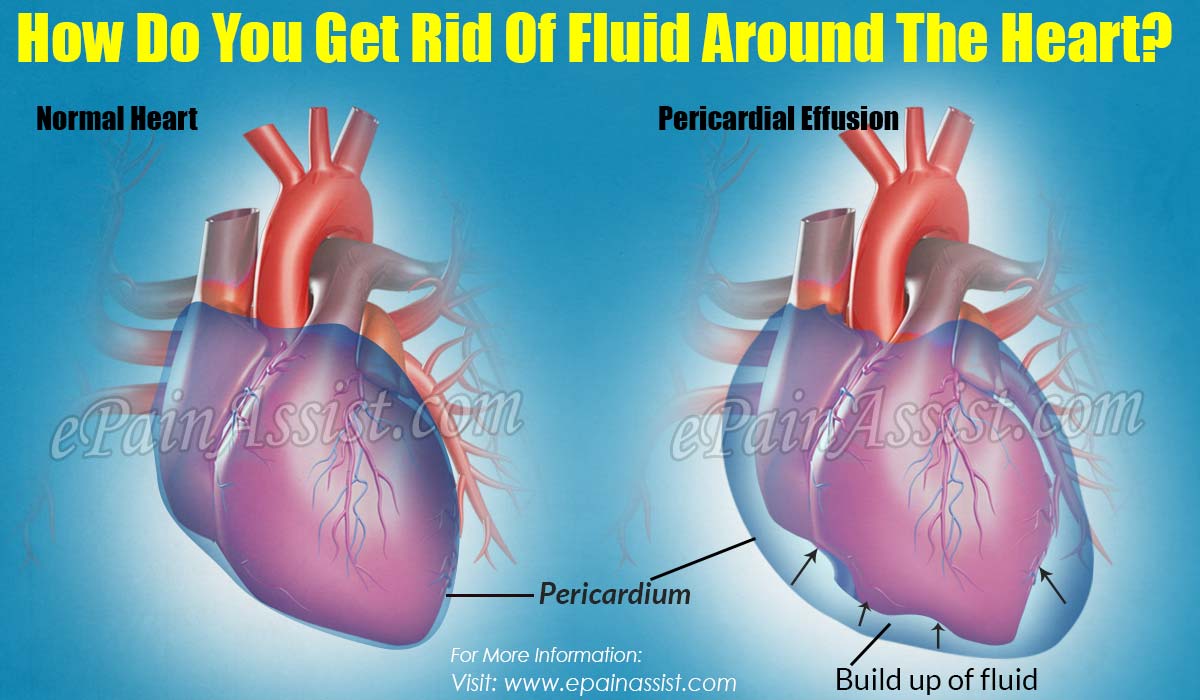Every human heart is surrounded by a very thin two layered sac, which is known as pericardium or pericardial sac. Its motto is to be protective about the hearts activity by limiting its motion and prevent it from expanding abnormally in cases when blood volume rises. In the usual scenario, there is not any fluid present between the heart muscles and pericardium. But sometimes due to unhealthy conditions some amount of fluid gets accumulated in this region. The most common reasons are infection or inflammation after heart attack or surgery, cancer, kidney failure and some other severe ailments.
What Does The Fluid Exactly Do?
This pericardial sac usually contains one to two-and-half tablespoons of fluid in adult people. This fluid sac reduces friction between heart beats and near chest area and this is surely not a healthy cardiac condition. Doctors say that one suffers from pericardial effusion when fluid increases around heart within the sac. What exactly happens is this fluid-filled sac when starts to enlarge, it starts putting extra pressure around the heart. And this increasing pressure prevents heart from undergoing normal blood filling and pumping. This eventually causes lesser blood to be pumped to the whole body with each heartbeat and hence causing multiple circulatory signs to develop.
How to Know When There Is Any Fluid Around Heart?
The signs and symptoms of pericardial effusion often go unnoticed as they are numerous and vary according to amount of fluid in the person. Some people have reported very intense signs when they had rapid accumulation of minor amounts of surplus pericardial fluid. All in all the signs one may experience always be subject to how much pericardial fluid is there and how rapidly is it amplifying.
The occasional symptoms that people have reported include hasty heart rate, stumpy blood pressure, cool palms or feet, swollen hands and feet, bloated neck veins, light dizziness, fainting, sudden anxiety, impatience and/or misperception problem. The main reason behind many of these is decreased blood flowing to brain due to unhealthy blood pumping by heart.
It is a noteworthy point that these all symptoms become visible only after this excess fluid reaches a perilous level in the sac. You might be wondering if this fluid sac is really dangerous or not? Then, let me confirm it to you that if not treated promptly, then pericardial effusion can turn life threatening or conclude in to a heart shock or failure.
How to Test For Fluid In Heart?
Alike most of the cardiac ailments, the pericardial effusion is also detected using an echocardiogram. In this an ultrasound scan of heart is done so as to assess the volume of fluid round the heart. Also sometimes this test determines what type of fluid is gathered. Other test used for detecting pericardial effusion is CT scan of chest. Nonetheless, the results of echocardiogram are a better judgement note that that of CT scans.

How Do You Get Rid Of Fluid Around The Heart?
The cure varies according to the amount of excess fluid present in the individual and the medical history. Medical practitioners divide the patients in three subcategories namely, mild, moderate and large (medically known as cardiac tamponade). The treatment undoubtedly follows the similar pattern.
For the mild pericardial effusion, doctors try to remove the underneath cause at first. If the cause is eradicated successfully and symptoms vanish during the process, no further steps need to be taken. In the moderate effusions, functioning of heart starts to hinder, so proper supervision and medication is required. The cardiologist notices the echocardiographs of the individual for around a week and then the underlying symptoms are drained accordingly. Large pericardial effusions are to be drained immediately. Depending on the patient’s condition, sometimes the doctors prefer making a hole in the sac so as to continue drainage afterwards. The two prominent methods used for draining are pericardiocentesis and creating pericardial window.
Also Read:
